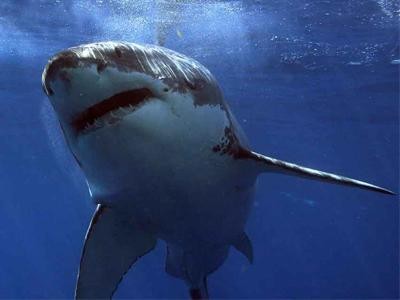Why Are Great White Sharks Still a Mystery to Us?
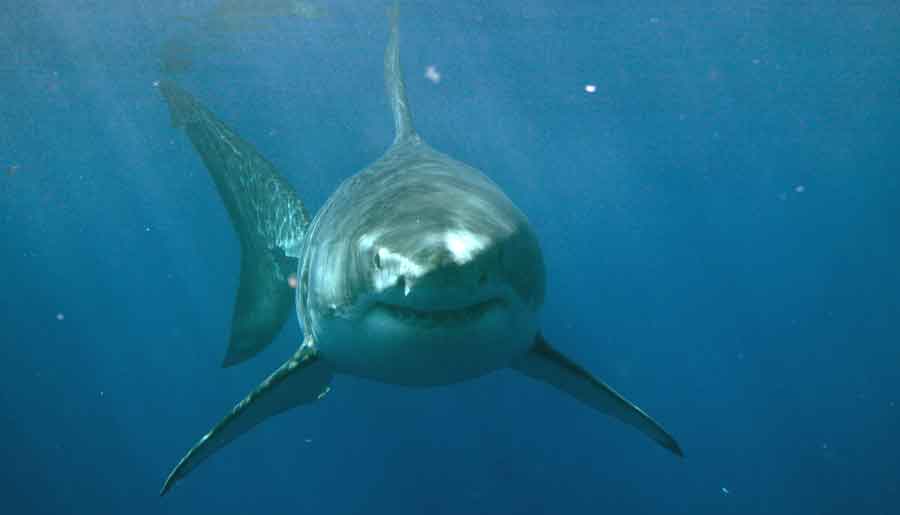
Thanks to media hype like Jaws and Finding Nemo, white sharks are the ocean's most iconic and feared fish. But we know surprisingly little about them.
Much of what we think we know about great white sharks simply isn’t true. They aren’t mindless killers, they aren’t always loners, and they are much smarter than scientists gave them credit in the past.
Meeting a great white shark in the wild is nothing like you expect it would be. At first glance, it’s not the zeppelin beast we’ve come to expect from a thousand TV shows. It’s portly, bordering on fat, like an overstuffed sausage. The world’s greatest predator is little more than a slack-jawed buffoon.
It’s only when the underwater blimp turns to face you that you understand why it’s the most feared animal on Earth. Its head tapers to an arrow that draws its blue eyes into a sinister-looking V. The laconic grin is gone, and all you see are rows of two-inch teeth capable of crunching down with almost two tons of force. Slowly, confidently, it approaches you. It turns its head, first to one side and then the other, evaluating you, deciding whether you’re worth its time. Then if you’re lucky, it turns away, becoming the buffoon again, and glides lazily into the abyss.
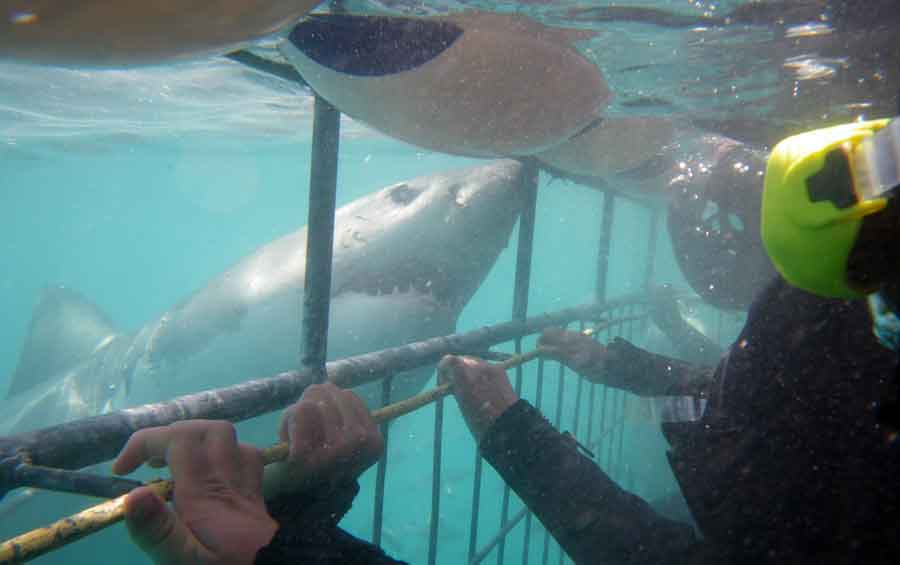
Perhaps no other animal stirs primal panic like a great white shark.
This one returned, again and again, to investigate a cage diver in waters off Gansbaai. However, people may pose more of a threat to great whites than the sharks pose to people.
There are more than 500 species of sharks, but in the popular imagination, there’s really only one. When Pixar needed an underwater villain for its animated film Finding Nemo, it didn’t look to the affable nurse shark or the aggressive bull shark. Not even the tiger shark, which would be more appropriate in Nemo’s coral-reef home. It was the great white shark—with its wide, toothy grin—that was plastered on thousands of movie billboards across the world.
The great white shark is the ocean’s iconic fish, yet we know little about it—and much of what we think we know simply isn’t true. White sharks aren’t merciless hunters (if anything, attacks are cautious), they aren’t always loners, and they may be smarter than previously believed.
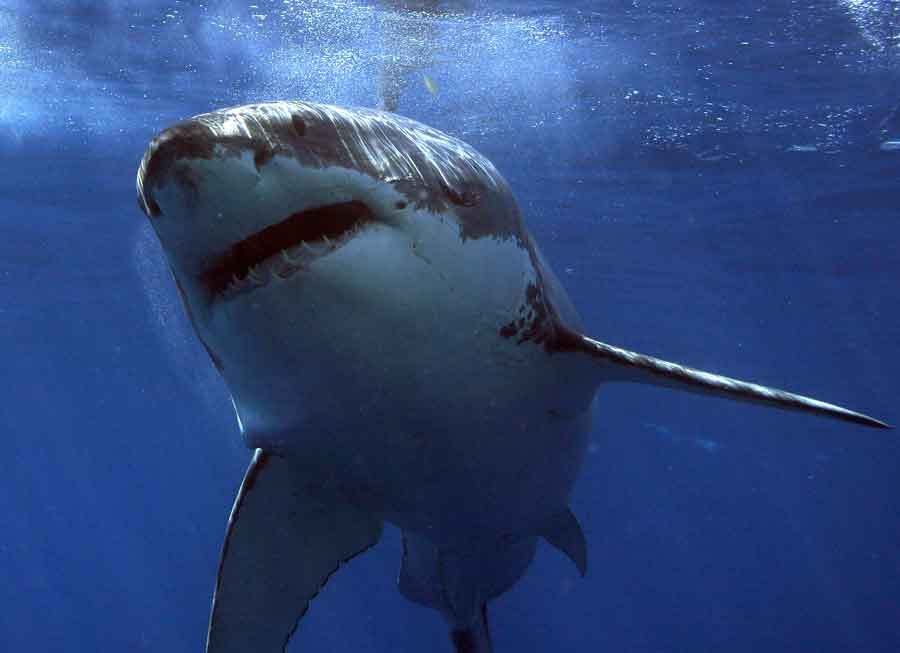
Unknown to us is how many months they gestate and when they reach maturity. No one has seen great whites mate or give birth. We speculate but don’t really know how many there are or where, exactly, they spend most of their lives.
Imagine that a land animal the size of a pickup truck hunted along the coast of South Africa.
How could we know every detail of its mating habits, migrations, and behaviour? After all, it is not a zoo out there. The rules are different underwater. Great whites appear and disappear at will, making it nearly impossible to follow them in deep water. They refuse to live behind glass—in captivity, some have starved themselves or slammed their heads against walls. (Several aquariums have released them for their own safety or because they were attacking tank-mates.)
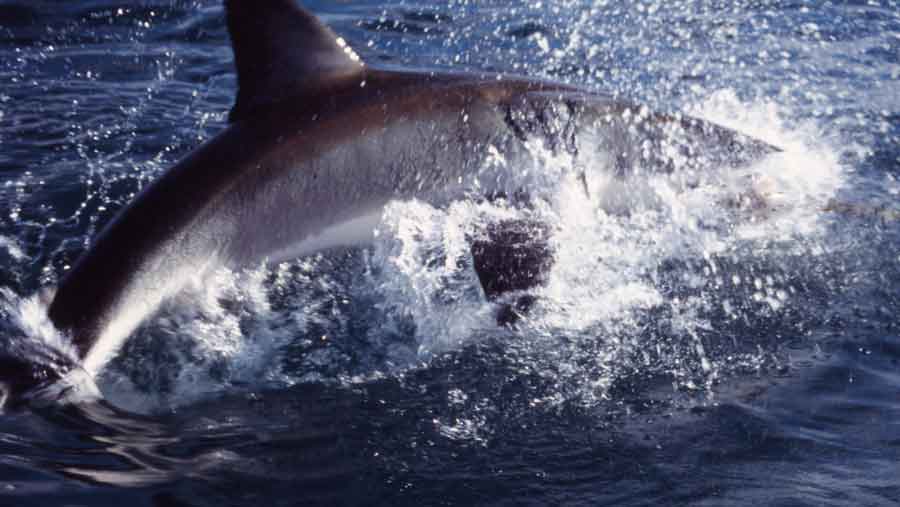
Shark Alley near Gansbaai is where they search for seals during the winter months. Great whites are purely solitary creatures but sometimes they congregate near food.
Shark Alley near Gansbaai is where they search for seals during the winter months. Great whites are purely solitary creatures but sometimes they congregate near food. These deep waters off Gansbaai in South Africa is one of the best places in the world to see great white sharks all year round.
Yet scientists today, using state-of-the-art technologies, maybe on the verge of answering two of the most vexing mysteries: How many are there, and where do they go? Unravelling these mysteries could be critical to deciding how to protect ourselves from them and them from us. When we finally see the great white clearly from all angles, will the world’s most fearsome killer deserve our fear or our pity?
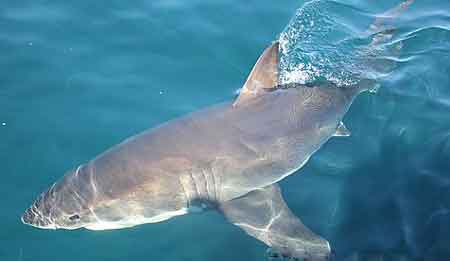 Great whites congregate seasonally around five “hubs” or territories, including California’s coast down to Mexico’s Baja California, South Africa’s southern shores, and Australia’s southern coast, where they gather to feed on seals.
Great whites congregate seasonally around five “hubs” or territories, including California’s coast down to Mexico’s Baja California, South Africa’s southern shores, and Australia’s southern coast, where they gather to feed on seals.
Of course, counting great whites is a lot harder than counting land animals or even marine mammals. Scientists, therefore, can only make massive assumptions about shark movements and then extrapolate. A team in South Africa estimated the population there at around 900, while another team put Mexico’s Guadalupe Island population, part of the California hub, at just 120 or so.
Are these large numbers or small? Are great whites thriving or dwindling? The world has about 4,000 tigers and 25,000 African lions. Using the lowest estimates, global great white numbers resemble the estimate for tigers, an endangered species. Using the highest estimate, the population is closer to that of the lions, which are classified as vulnerable.
Several experts see them heading toward extinction; others see a positive trend. Some say rising seal populations are a sign that great whites are nearly gone, while others say more seals mean more sharks. “I haven’t seen any evidence in the last decade that white sharks are declining,” says Aaron MacNeil, an Australian statistician who crunches shark data. “Yes, there is a historical depletion of white sharks. But the story is not that they are going extinct. The story is that they are probably increasing very, very slowly.”
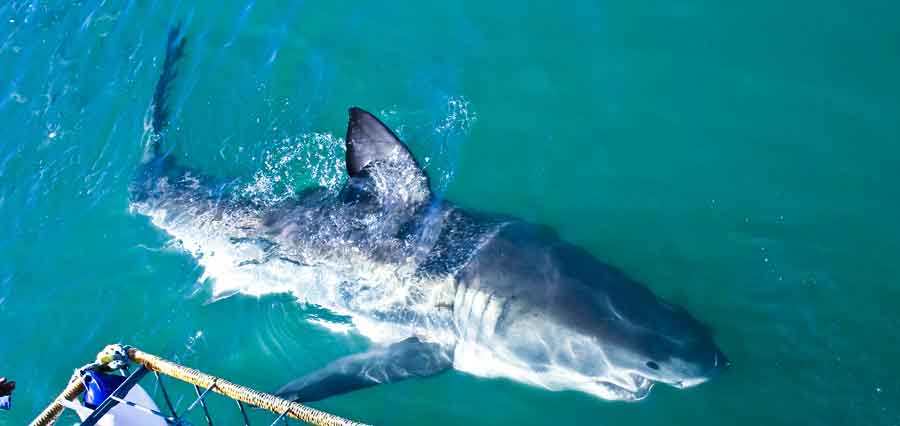
There’s reason to be hopeful. Few if any fishermen target great whites today, yet a global pact, the Convention on International Trade in Endangered Species, gives white sharks its second strongest conservation rating because fishermen catch them unintentionally. With numbers so low, even accidental catches can play havoc with the species, which, as a top predator, has an ecologically important role in managing the oceans.
To understand whether great white sharks need our protection, we must know not only how many there are but also where they go. Their migrations aren’t neat, like a bird’s or a butterfly’s. They’re messy, with one hugging the coast while another zigzags hundreds of miles out to sea. Many, but not all, seem to seasonally move between warm and cold water. And the paths seem different for males, females, and juveniles.
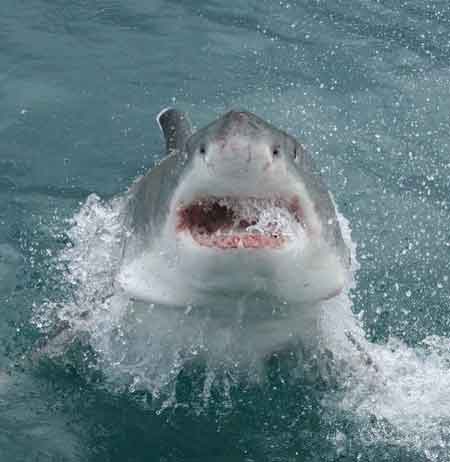 With the expansion of technology can the invention of long-term, long-distance tags that can communicate via satellite and finally scientists are getting some clarity..
With the expansion of technology can the invention of long-term, long-distance tags that can communicate via satellite and finally scientists are getting some clarity..
“I call it Burning Man for white sharks,” says Salvador Jorgensen, a biologist who studies factors that drive great white migration and ecology. “They are heading out to what some people call the desert of the ocean, and what the hell are they doing out there?”
One possible answer is mating, which might explain why no one has ever observed it. After spending the summer and fall gorging on seals, they head out to the deep ocean to breed, relying on energy stores to live.
The males then swim back to the coast while the females wander to unknown places, where they remain for another year or so, perhaps to birth their young. New-born sharks then show up at feeding grounds devouring fish until they are big enough to join their elders in the north or south hunting seals.
It’s not a perfect picture. Females and males aren’t in the café together for long, and we don’t know where the babies are born.
Shark attacks on people are incredibly rare. In waters off California, the chances of a surfer being bitten by a great white shark are one in 17 million; for swimmers, it’s even rarer—one attack in every 738 million beach visits.
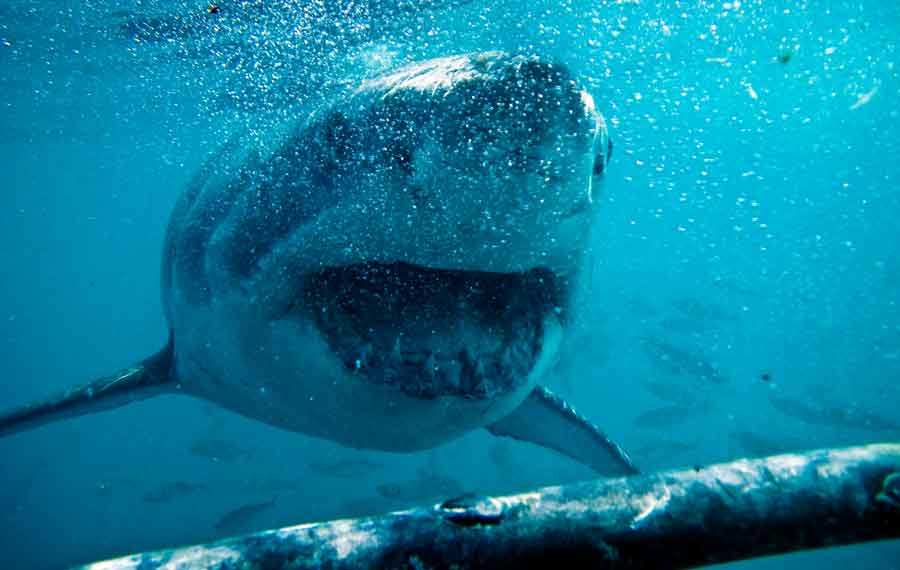
It may be that great white sharks are rebounding across the world: following the bigger seal and sea lion populations, re-establishing themselves in their old hunting grounds, reclaiming the coasts they nearly lost.
Then again, it may be that great whites today are hanging over the abyss of extinction, clutching the edge by the skin of their jagged teeth. Will, we look past our fear and reach out a hand to this creature?
You can read the original article that appeared in Nation Geographic here:https://on.natgeo.com/2CAoWK2
All photos were taken on location in Gansbaai, South Africa

